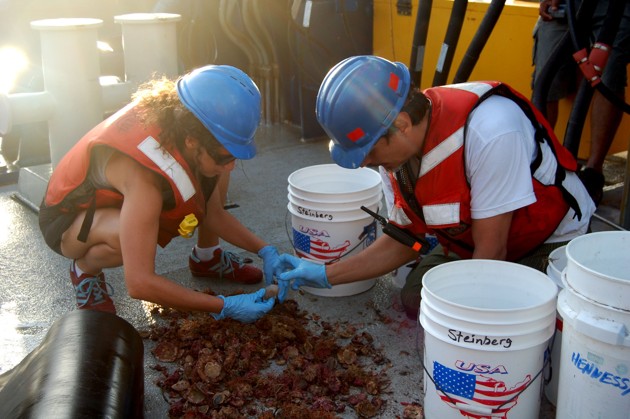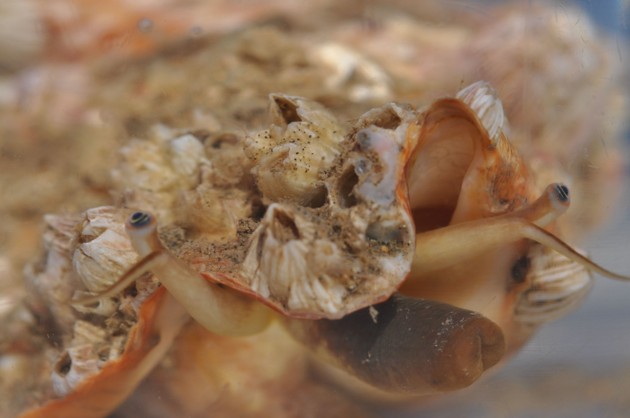Scientists Have Discovered a 600-Mile Coral Reef
It’s at the mouth of the Amazon River.
Robinson Meyer
Among the world’s rivers, the Amazon reigns with the heaviest crown.It begins in Peru, less than 75 miles from the Pacific shore, among the tiny glacial streams that trickle through the Andes. Those creeks become a river, which joins a network of other capillaries draining more than 3 million square-miles of South American land—water from mountains, foothills, and the world’s largest rainforest uniting to form a monumental flow that thunders clear across the continent until it gushes into the Atlantic. When measured by discharge, it is the largest river in the world: Every day, one-fifth of all the water that flows from all Earth’s rivers into all Earth’s oceans does it here, as the Amazonian flume. Nutrients in the spill support oceanic algae blooms hundreds of miles from shore.
Now, researchers have added yet another jewel to the river’s crown. A team of Brazilian and American scientists have discovered a new sponge and coral reef more than 600 miles long (1,000 kilometers), located at the mouth of the Amazon River. The reef appears to sprawl across more than 3,600 square miles of ocean floor at the edge of the South American continental shelf, from the southern tip of French Guiana to Brazil’s Maranhão State.
(Yager’s expedition was repeatedly denied access to the mouth of the Amazon by the Brazilian government, so she had added Brazilian oceanographers to the cruise in hopes of securing its approval.)
“I kind of chuckled when Rodrigo first approached me about looking for reefs. I mean, it’s kind of dark, it’s muddy—it’s the Amazon River,” Yager told me. “But he pulls out this paper from 1977, saying these researchers had managed to catch a few fish that would indicate reefs are there. He said, ‘Let’s see if we can find these.’”
Moura would need a dredge to look for a reef, but Yager hadn’t even planned on taking one on the journey. She wasn’t sure she had access to one. But after Moura convinced her, she remembered that there was a “big old dredge” sitting on the back deck of the oceanography building at the University of Washington, her alma mater. They shipped it across the country in time for the cruise.
Timing would be tight no matter what. The Atlantis had to get from Barbados to the Amazon and back in two and a half weeks, and most of that time would be spent on its original goal. But Moura paid attention to the seabed sonarthroughout the cruise, Yager said, and when they wound up with some extra time, he knew where he wanted to put down the dredge.
Rebecca Albright, an oceanographer and coral researcher at the Carnegie Institution for Science who was not connected to the paper, confirmed that there were not previously known to be reefs in the area.
“Traditionally, our understanding of reefs has focused on tropical shallow coral reefs which harbor biodiversity that rivals tropical rainforests,” she said in an email. “More recently, we’re starting to explore and appreciate different types of reefs that exist in marginal environments. The new Amazonian reef system described in this paper is another example of a marginal reef that we didn't previously know existed.”
Climate change is making these more robust reefs more and more important. Their existence reveals how corals survive in harsher ocean conditions, and they also hint at how some of the biodiversity sustained by tropical coral reefs survives warmer periods like the world is entering.
“As tropical coral reefs are in decline worldwide (we’re currently in the midst of the third global coral bleaching event), it may become more important to understand which organisms can tolerate harsher conditions,” said Albright. Warmed oceans worldwide have hit some reefs particularly hard this year: 93 percent of the Great Barrier Reef is currently suffering bleaching.
But the new Amazonian reef is threatened by an even more pressing challenge than climate change. Over the past decade, the Brazilian government has sold 80 blocks for oil exploration and drilling at the mouth of the river. Twenty of these are already producing.
“[Moura] sent me a map of the leases, they’re just right there—right at the shelf break, right on top of the reef,” said Yager. “We don’t even have a very good map of the reefs yet.”



No comments:
Post a Comment